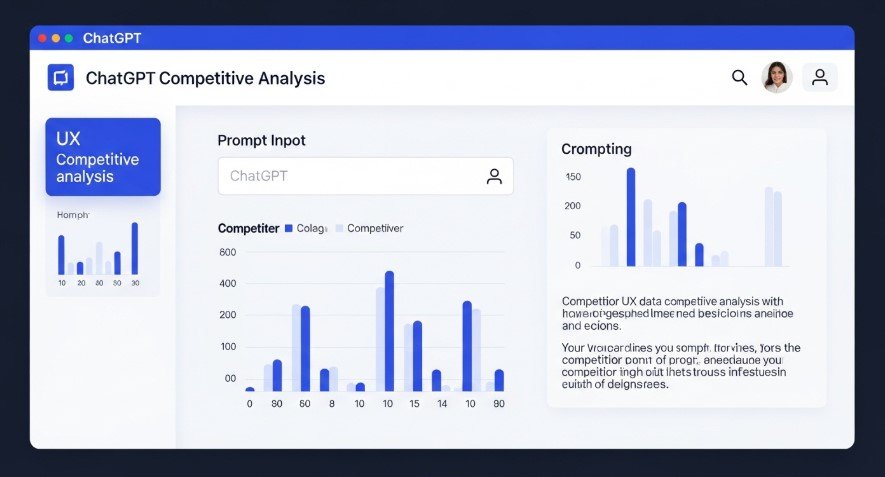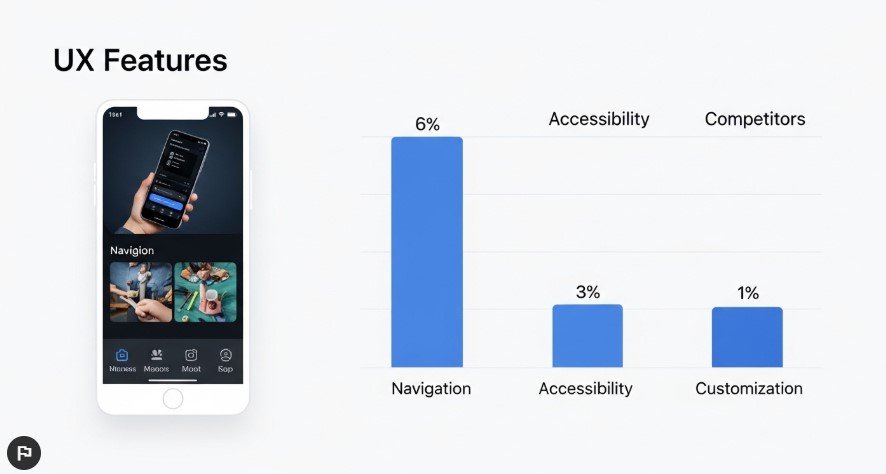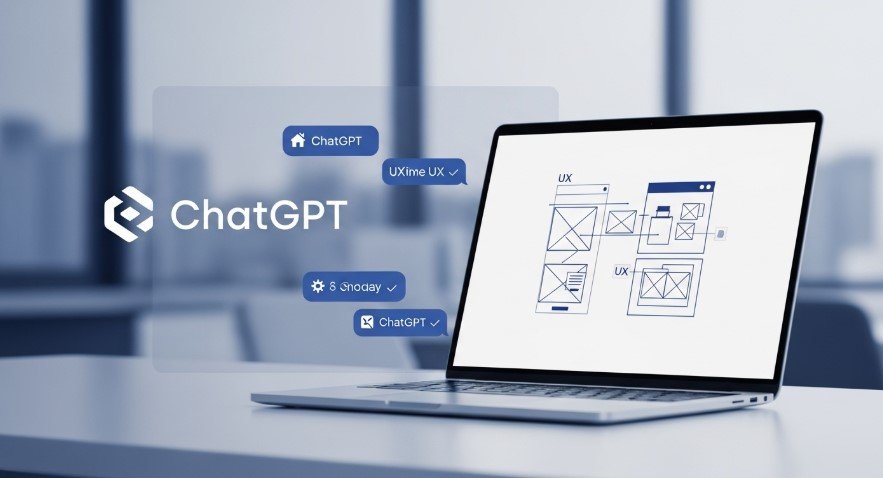In today’s fast-moving UX design world, understanding your competitors is key to creating better products. Competitive analysis helps you study competitors’ user experience (UX) to improve your own design, usability, and features. ChatGPT, an AI tool, makes this process faster and more efficient. This guide explains how to use ChatGPT for competitive analysis in UX design. It includes practical steps, sample prompts, and tips to help you stay ahead.

What is Competitive Analysis in UX?
Competitive analysis in UX design means studying competitors’ products to understand their strengths and weaknesses. This includes their design, navigation, usability, and user feedback. The goal is to learn what works, avoid what doesn’t, and find ways to make your product unique. Using ChatGPT, you can quickly gather insights and spot opportunities to improve your UX.
Why It Matters
- Learn from competitors: Understand what makes their UX successful.
- Avoid mistakes: Identify issues in their design to improve yours.
- Stand out: Find gaps in the market to create a unique product.
Why Use ChatGPT for Competitive Analysis?
ChatGPT is a powerful tool for UX competitive analysis. Here’s why:
- Speed: It processes data quickly, saving hours of manual research.
- Cost-effective: Free or low-cost compared to traditional tools.
- Data insights: Spots patterns and trends in user feedback or market data.
- Real-time updates: Provides current information on competitors.
These benefits make ChatGPT a valuable tool for UX designers aiming to streamline their research.
Step-by-Step Guide to Using ChatGPT for Competitive Analysis
Follow these five steps to use ChatGPT effectively for UX competitive analysis. Each step includes a sample prompt to guide you.
Step 1: Identify Competitors
Start by finding your main competitors in your industry or niche.
Prompt: “List the top 5 competitors in the [industry] space.”
Example: “List the top 5 competitors in the fitness app industry.” ChatGPT will generate a list, which you can refine by adding details like location or target audience.
Step 2: Analyze Competitor UX
Examine the user experience of competitors’ websites or apps. Focus on design, navigation, and usability.
Prompt: “Analyze the UX of [competitor’s website/app]. What are its strengths and weaknesses?”
Example: “Analyze the UX of Fitbit’s mobile app. What are its strengths and weaknesses?” ChatGPT might highlight strengths like simple navigation and weaknesses like limited customization.

Step 3: Compare Features
Compare your product’s features with competitors’ to find areas for improvement.
Prompt: “Compare the features of [your product] and [competitor’s product]. What are the key differences?”
Example: “Compare the features of my fitness app and Strava. What are the key differences?” This helps you see where your product excels or needs work.
Step 4: Assess User Feedback
User reviews reveal what people like or dislike about competitors’ products.
Prompt: “Summarize user reviews for [competitor’s product]. What are the most common praises and complaints?”
Example: “Summarize user reviews for Peloton’s app. What are the most common praises and complaints?” ChatGPT can pull common themes, like ease of use or technical bugs, from public data.
Step 5: Spot Trends and Opportunities
Identify industry trends and ways to make your product stand out.
Prompt: “What are the current trends in [industry] UX design? How can [my product] differentiate itself?”
Example: “What are the current trends in fitness app UX design? How can my app differentiate itself?” ChatGPT might suggest trends like gamification or personalized dashboards.
Best Practices for Using ChatGPT
To get the most out of ChatGPT:
- Use specific prompts: Clear, detailed prompts lead to better responses.
- Verify data: Cross-check ChatGPT’s insights with user reviews or industry reports.
- Combine with other tools: Pair ChatGPT with manual research for a complete analysis.
- Respect ethics: Avoid using AI to access sensitive or proprietary data.
Benefits of Using ChatGPT
- Saves time: Automates data collection and analysis.
- Affordable: Free or low-cost compared to other tools.
- Actionable insights: Finds patterns to inform your UX strategy.
- Up-to-date: Provides current data on competitors and trends.
Limitations to Consider
ChatGPT is powerful but not perfect:
- Accuracy issues: AI data may not always be correct. Verify with reliable sources.
- Human oversight needed: Use AI as a tool, not a replacement for human judgment.
- Ethical concerns: Ensure your analysis respects privacy and legal boundaries.
Conclusion
ChatGPT simplifies competitive analysis for UX design, helping you gain insights quickly and efficiently. By following the steps above and using targeted prompts, you can analyze competitors, compare features, and spot trends to improve your product. Always verify AI insights and combine them with other research methods for the best results. Start using ChatGPT today to create a UX that stands out in the market.
Frequently Asked Questions (FAQs)
Can ChatGPT fully replace traditional UX research?
No, it should complement other methods like user testing and interviews for a complete analysis.
How accurate is ChatGPT for competitive analysis?
It’s helpful but not 100% accurate. Always verify its outputs with trusted sources.
What are some tips for better ChatGPT results?
Use clear, specific prompts.
Cross-check data with reviews or reports.
Combine AI with human analysis.
Check more articles:
